Text this colour links to Pages. Text this colour links to Family Trees. Text this colour are links that are disabled for Guests.
Place the mouse over images to see a larger image. Click on paintings to see the painter's Biography Page. Mouse over links for a preview. Move the mouse off the painting or link to close the popup.
Antiquaries Journal V1 1921 Section 1 The Aubrey Holes is in Antiquaries Journal V1 1921 Section 1.
We are indebted to Bodley's Librarian for allowing us to examine the Plan of Stonehenge made by Aubrey in 1666 which forms part of the Monumenta Britannica preserved in the Bodleian Library. Aubrey mentions and marks upon his plan certain depressions, or cavities, at intervals within the circular earthwork. None of them was visible to us, but with a steel bar we searched for and found one, and subsequently more, all apparently at regular intervals round the earthwork. It occurred to us that there might be intermediate cavities, and excavation showed them to be at regular intervals of 1 6 ft., with the exception of two on the south-east side, which are a little closer together. To these we have given the name of "Aubrey Holes" to distinguish them from others that may hereafter be found, and as a compliment to our respected pioneer who left such a useful record.
We have excavated a series of these holes from stone no. 80 (called the Slaughter Stone [Map]) round by the east to one on the south-west, where we stopped, deciding to gain experience before completing the circle. The holes so far excavated are twentythree in number, but the series in the semicircle is not complete, as there is an intervening barrow on the south; so we left out four holes until we can give attention to the barrow. Unfortunately it has been opened before; and to distinguish the disturbed from the undisturbed portion it will have to be very leisurely and carefully worked, for it is very important, and may help us to arrive at the relative ages of barrow, bank, and holes, and settle the order of succession.
The holes vary very little in size and shape: the biggest is 3 ft. 5 in. deep, its maximum diameter 5 ft. 3 in., and the minimum 4 ft. 6 in. The smallest is 2 ft. deep, maximum diameter 2 ft. 6 in., and minimum 2 ft. 5 in. They are as a rule sharp and regular cuttings in the chalk, and are all more or less circular. Many have the edge of the chalk crater shorn away, or crushed down, on the side towards the standing stones of Stonehenge, this being apparently due either to the insertion or withdrawal of a stone, probably the latter. From their appearance and regularity there can be little doubt that they once held small upright stones; for, in two cases at least, a portion of the excavated chalk appears to have been returned, as if the hole had been too deeply dug to suit the intended height of the stone. This returned rubble was extremely hard and compacted, as if a very heavy weight had rested upon it for a long time. With the exception of four holes, all bore evidence of cremated human remains having been deposited in them, and at least three showed signs that actual cremation had been carried out in them. Among the more interesting may be mentioned:
No. 21. Depth, 3 ft. I in. Maximum diameter, 5 ft. 5 in. Minimum diameter, 5 ft. 2 in. It contained 51 sarsen fragments, one being pitted, 61 fragments of foreign stone, 71 of hammerstone sarsen, i piece of Bronze Age pottery, and 4 of RomanoBritish pottery. All these occurred about 20 in. below groundlevel. After that a ball (hand-made) of chalk, i o pieces of unburnt animal bone, and a bone pin in three pieces, burnt, at 2 ft. 3 in. A large cremation, amongst much wood ash dispersed in earthy rubble. This was first met with at 2 ft. below ground-level and continued to the bottom of the hole. Much of the rubble was burnt red. The hole had a sloping inner side (the side farthest from the rampart). At the top of this slope was a small bowlshaped recess containing cremated bones. Presuming that the sloping side was crushed by the withdrawal of the stone, the cremated remains must have been deposited afterwards. The north-west side near the rampart was covered with finely crushed chalk rubble, hardened as if by great pressure (fig. 6).
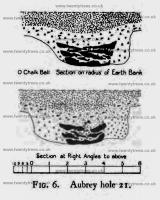
Figure 6. Aubrey Hole 21.
No. 1 6. Depth, 3 ft. 3 in. Maximum diameter, 4 ft. Minimum diameter, 3 ft. 7 in. Contained 38 fragments of sarsen (one a fairly well-shaped hammer), 30 of foreign stone, 5 pieces of Romano-British pottery, a piece of foreign stone (small, rather flat, showing signs of use by rubbing), 3 rough flints, 6 flint flakes, and a flint fabricator at 34 in. below ground-level.
The hole contained a great deal of wood ash with cremated bones in it. This began at 19 in. below ground-level and continued to the bottom. The side of the hole had a layer of white chalk rubble in which was a fabricator, 5 in. from the bottom (fig. 7).
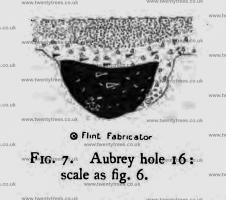
Figure 7. Aubrey Hole 16: scale as fig. 6.
No. 13. Depth, 2 ft. 7 in. Maximum diameter, 3 ft. 7 in. Minimum diameter, 3 ft. 5 in. Contained 28 sarsen fragments, 34 of sarsen hammer-stone down to 25 in. below ground-level; below this 1 large animal bone at 28 in., a bone pin 6½ in. long at 18 in., and a flint fabricator at 22 in.
A few cremated bones were met with just below the humus at 10 in. Wood ash was met with at 24 in. on the inner side of the hole and continued in a slanting direction down and across to the other side. Amongst the wood ash were cremated bones. There was chalk rubble on the inner side under the burnt wood, and a certain amount, as usually found, on the side nearest the rampart (fig. 8).
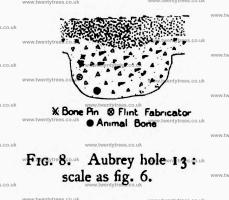
Figure 8. Aubrey Hole 13: scale as fig. 6.
All About History Books
The Chronicle of Walter of Guisborough, a canon regular of the Augustinian Guisborough Priory, Yorkshire, formerly known as The Chronicle of Walter of Hemingburgh, describes the period from 1066 to 1346. Before 1274 the Chronicle is based on other works. Thereafter, the Chronicle is original, and a remarkable source for the events of the time. This book provides a translation of the Chronicle from that date. The Latin source for our translation is the 1849 work edited by Hans Claude Hamilton. Hamilton, in his preface, says: "In the present work we behold perhaps one of the finest samples of our early chronicles, both as regards the value of the events recorded, and the correctness with which they are detailed; Nor will the pleasing style of composition be lightly passed over by those capable of seeing reflected from it the tokens of a vigorous and cultivated mind, and a favourable specimen of the learning and taste of the age in which it was framed." Available at Amazon in eBook and Paperback.
No. 3. Depth, 2 ft. 6 in. Maximum diameter, 3 ft. 2 in. Minimum diameter, 3 ft. 4 in. In this some of the excavated chalk had been returned to the hole, presumably to raise the stone to the desired height. The same peculiarity was met with in two other instances. In this there was a thickness of 8 in. over the chalk rock much compressed. The hole had in it a cremation dispersed amongst the earthy rubble which filled it (fig. 9).
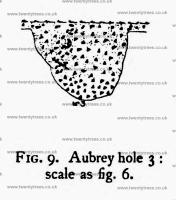
Figure 9. Aubrey Hole 3. scale as fig. 6.
No. 5 hole had a similar layer, which was 5 in. thick. This hole also had a cremation over the hard mass, from 10 in. to 27 in. below the surface (fig. 10).
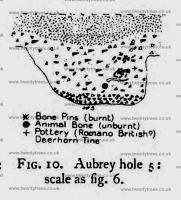
Figure 10. Aubrey Hole 5. scale as fig. 6.
No. 19 was interesting because, after the upper soil was passed, we came upon a mass or white flint flakes at 32 in. discarded by an implement maker who had been working on the spot and who must have demolished a large block of flint to make thin and delicate implements. That they all belonged to the same block was evident, not only from the colour and material, but because some of them fitted together; and they also clearly show the marks made when they were struck off (fig. 11).
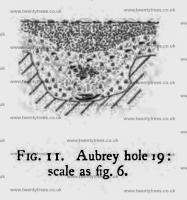
Figure 11. Aubrey Hole 19. scale as fig. 6.
Sarsen and other stone fragments were found in nearly all cases on the upper level, but rarely below 20 in., and they usually decreased in number downwards. It is a curious fact that in almost all the holes there was a litde white chalk rubble on the bottom and against the side nearest the rampart. The reason may possibly be that the stone was dragged out on the opposite side, leaving this deposit undisturbed. It might perhaps be connected with the making of the rampart, but these questions we hope the excavation of the barrow may solve.